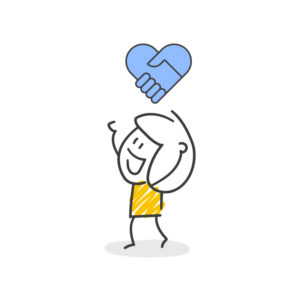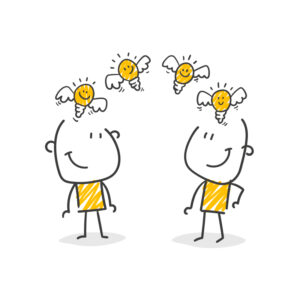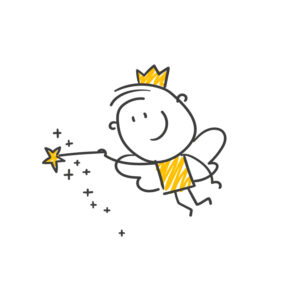Motivation, Recognition
Using peer recognition to stop rising attrition rates

Attrition Rates in a Post-Pandemic World
The world we knew no longer exists today. The sight of people waking up from bed after the hamming of multiple alarms, and rushing towards their workplaces after usual coffee runs is uncommon these days. The modern-day employee who works in an industry where working from home is possible prefers to set their own hours, wake up peacefully, and go through their morning routine before logging in for work. Some may enjoy hitting the gym while some prefer cooking a nice breakfast before starting work. All of these changes have been brought about by the pandemic, which even after two years dictates the way companies do their business.
While this has undoubtedly positively contributed to the lives of those employees who wish to focus on themselves and not mindlessly travel every day and waste their time stuck in traffic, it also has a couple of downsides. These days, the daily news is filled with stories about high attrition rates, employees across all sectors are quitting their jobs for a variety of reasons but the most prominent one is the after-effects of the pandemic and the directive of companies to employees, forcing them to work from the office.
It certainly is a sudden jolt back to the usual pre-pandemic life for many individuals and they are unwilling to needlessly waste time everyday traveling to work while they can be more productive and efficient with respect to time management while working from home. The levels of comfort, the availability of piping hot meals, the ability to work on oneself and focussing on an overall holistic lifestyle is prompting employees to forego their jobs in exchange for convenience and peace of mind.
While we aren’t here to debate about employees being right or wrong, we are here to stress how ridiculously high attrition rates are a reality and they are here to stay unless employers break the norms and adopt innovative methods to reverse the attrition rates.
The usual techniques that are used to offset high attrition rates are offering employees promotions, compensations, career progression and skill incentives. Oftentimes, these seemingly help to solve the problem. However, this “solution” isn’t long-term and hasn’t generally proven to given guaranteed results. One can think of this to be a temporary relief to a timely recurring problem. If one is genuinely invested in finding a cure to this, there is no better way than to opt for a foolproof peer recognition program that will motivate employees on a regular basis to do their best and deliver the results desired from them.
Many might agree to our views, while some may disagree. Though we are firm in our belief and respect the views of detractors, there is a considerable number of reasons that back our beliefs. Given below are a few of these reasons, and they will certainly make a strong case for themself:
1. Getting Recognized for Good Work:

If employees are publicly getting recognized by colleagues for good work, it undoubtedly serves as a motivator. So whether your organization promotes work from home or not, if they use PeerFives, you can count on regular recognition for good work by you and your colleagues. Additionally, this recognition doesn’t arrive days, weeks, or months later. It occurs instantly and adds to the feel good factor.
As humans our natural need for attention and being recognized is fulfilled and drives us not only to repeat the good work but strive to perform even better for higher praise.
2. Social Wellbeing:

A good peer recognition program is known to help the overall wellbeing of employees. With regular recognition from colleagues and higher-ups at work, employees are known to be very content with their jobs. This benefits the social wellbeing of employees. They are more likely to bond easily, they will be inclined to genuinely look after each other in times of need.
This contributes towards the strengthening of their bond beyond work as well, ultimately leading them to feel sentimentally attached to the place and their colleagues. This itself discourages most employees from resigning even if there is a far superior offer from competitors in the market.
3. Data backed regular feedback:

Employees are undoubtedly happy when it comes to receiving praise and recognition on a regular basis. But when it comes to annual appraisals, there is the additional pressure to ensure that employees are recognized fairly for the effort they have put in throughout the year.
Using a comprehensive peer recognition tool such as PeerFives will give you an in-depth insight into the year long performance of the employee and how their peers react to the work done by them on a regular basis. This data shall help justify employee’s appraisal and ensure that no one feels cheated.
Impact of Peer Recognition on Attrition Rates

In conclusion, peer recognition is a great way to contain attrition rates, especially in 2022 when the numbers are continuously increasing. Any company can formulate a good peer recognition program and implement it in the most efficient way possible. For those that are looking to maximize their team potential, we recommend you visit our website PeerFives.com and understand what we offer.
PeerFives offers assistance in designing a detailed peer recognition program, and we will guide you every step of the way in implementing it as well. PeerFives has a special pricing model that helps accommodate everyone from startups to large organizations while also leaving room for customization. This ensures that organizations don’t miss out on having a good peer recognition program, irrespective of their size.
Lastly, our integrated Marketplace provides users with a dedicated portal to purchase exclusive merchandise and gift cards in exchange for the PeerFives that they have been rewarded with. All of this, when paired with our smooth and simple user experience, makes peer recognition even easier.
Contact us NOW and unlock the full potential of your team.

